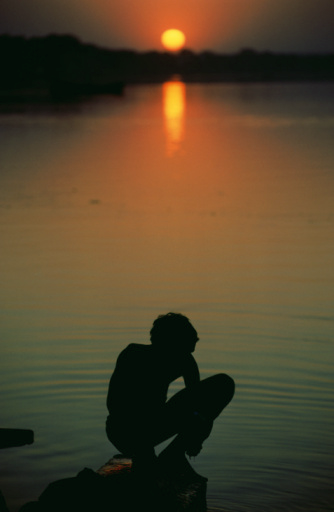Dec 17, 2025
Dec 17, 2025
 Ganga, the holy River, it is said when the King Bhagirath managed to bring it to the earth, came with such a force that he had to invoke the help of Lord Shiva to contain the River’s might. The Ganga was lost in the labyrinths of long tresses of the Lord and by the time it emerged again, it was much quieter river. Even today, the Ganga’s might and roar has to be seen to be believed in the higher Himalayas, where it seems to be attempting to break the shackles and rush towards the ultimate destination, the Sea!
Ganga, the holy River, it is said when the King Bhagirath managed to bring it to the earth, came with such a force that he had to invoke the help of Lord Shiva to contain the River’s might. The Ganga was lost in the labyrinths of long tresses of the Lord and by the time it emerged again, it was much quieter river. Even today, the Ganga’s might and roar has to be seen to be believed in the higher Himalayas, where it seems to be attempting to break the shackles and rush towards the ultimate destination, the Sea!
29-Oct-2010
More by : V. K. Joshi (Bijji)

|
Radha Krishen Pandey ji-Ganga is soul of India. It has to flow. If Ganga stops then everything is over. We have to ensure that Ganga flows uninterrupted. |

|
re Ganga bahati hai kyu......... |

|
Thank you very much Kamal ji. The problem lies not with the fund or the policies of the Government. The problem lies with us who love to soil the Ganga as per our needs. There was a time when our rivers were an example for the world in terms of their purity. Times I think have changed and we have got to take a cue or two from the developed nations-as to how the people respect their rivers! |

|
MA GANGA is the soul of India. If she vanishes so will India. I fail to understand why Inidia does no --wiyhuot abandon, puts in an enormous effort to fix the problems created by Indians. There has to be resources allocation to clean, maintain, regulate and allocate water of GANGA. The silt of the tail end is the reason of the most productive Delta in the World, it is possible that the river, if allowed, apportions her own silt , like she has done for almost a trillion years. The shout of global warming and glacier melting is only a tax collection idea of the socialists , the real propblem is our MA GANGA is treated jst as half a billion other MAs are treated in India - disrespectfully. It used to be a sin to pee or deffecate in flowing water-- India has become a country of SINNERS. I liked your article very much. People like you will eventually get it done. Jai Ho! |